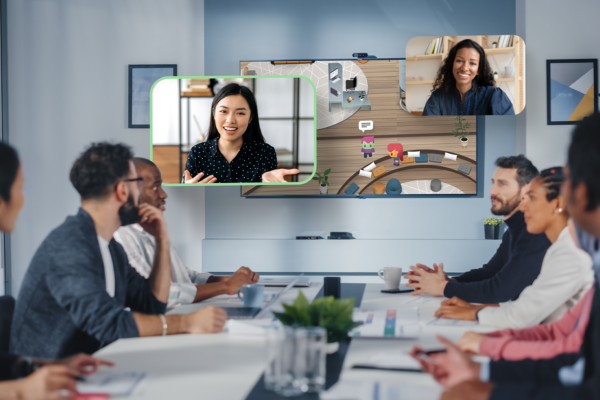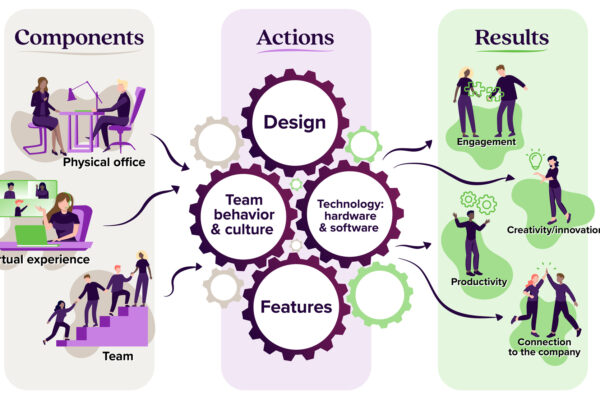
Trade Show Tradeoffs
As a result of the COVID-19 pandemic, tradeshows have been postponed or cancelled. A mainstay of tech companies’ marketing efforts, these events performed many critical functions that now need to be reimagined or shifted to make sure businesses and innovators stay connected and creative.
We’re going to break down the different reasons tech companies attend tradeshows and suggest some strategies for adapting your marketing to compensate for their absence.
What do tradeshows offer?
First, let’s consider why people visit tradeshows. It all boils down to one thing: they are looking for something new. New products, new ideas, new trends, new partners, new research. They want some stimulation.
People are still curious during the pandemic. Maybe even more so. They want to hear about innovative products and ideas, to see creativity and life, to be inspired and encouraged by others’ ingenuity and resilience. As you plan your marketing efforts during the pandemic, consider this and adjust your message accordingly to show customers how dynamic and adaptable you are while emphasizing how you can help them.
Tradeoff #1: Finding new customers
Why do businesses attend tradeshows, and how can we shift marketing now that traditional, large, in-person events are off the table?
Of course, one of the main reasons your business would participate in tradeshows is to find new customers. As people wind their way through booths, they discover new possibilities and make business connections – they are able to learn about your company and how it could help them. With this avenue cut off, here are a few suggestions to increase your marketing reach and expand your customer base.
Direct mail and e-mail campaigns are always one of the most effective marketing tools, but this is especially true during a pandemic. People are more likely to be at home or in their office (or in their home office!) and looking through their correspondence.
Although typically you should avoid sending B2B marketing materials to potential customers’ homes, remote work has reversed the conventional logic: offices might be empty so the only way to reach potential customers could be to send materials straight to their home address.
Consider how receiving marketing materials at home might change how they are read and digested – they should be family friendly. You could even include creative refences to and activities for remote schooling and family life during the pandemic.
On the other hand, resist the urge to pick up the phone and call potential clients. Interruptions, especially when people are already juggling multiple distractions working from home, will be unwelcome. Let your audience engage with your marketing materials on their own schedule, and they’ll be more likely to appreciate them.
To increase your direct mail marketing, dive into your own mailing lists and consider purchasing new mailing lists from professional associations and databases. As the economic situation evolves, having complete, up-to-date contact information will be vital!
Tradeoff #2: Exchanging insights
Another major reason companies go to tradeshows is to exchange ideas. Meandering through booths and immersing yourself in new products, new thoughts, and new faces stimulates your own creativity. And you might unexpectedly find that someone has just the right answer to a dilemma your company faces – or you might have just the right answer for them!
To encourage the flow of information while tradeshows are on pause, you can join or organize virtual meetings through trade groups and professional associations. To recreate the immersive, getaway experience of tradeshows, you could schedule your virtual meetings over several days.
Look to create memorable experiences with interactive content and useful information. Zoom fatigue is real – people are ready to do more than look at static heads. The internet is an immense space full of mind-blowing innovation and creativity. Virtual events should be more than a staid substitute for in-person events. Explore digital resources to make the most of the medium and turn virtual events into something people look forward to.
For example, at Uncork-it we’ve explored using Gather, a new platform that allows participants to interact naturally in a virtual world that can be customized to resemble a tradeshow space. [link] In place of ice breakers and mixers, you can build interactive features like games, videos, scavenger hunts, and Easter eggs into the environment to encourage people to explore the event and make new connections.
Now would also be a good time to boost your content marketing: put out some blogs, publish white papers, and lead webinars. This will help you show thought leadership and create conversations with potential partners and clients. As a counterpart to your own content marketing, engage more with the content marketing of others. This will help you start dialogue and create community across your industry, but also keep tabs on potential competitors and find new ways to reach new audiences.
Tradeoff #3: Show innovation
During the pandemic, public relations and press coverage are particularly important to get your company noticed. With live events drawn back, people are engaging more with news material and social media. Increasing your presence, both online and in local, state, or national news, will help you get your brand, message, and products out there.
To get media attention, develop relationships with journalists who might be interested in your company. Help them find a scoop by sharing information and insights with them proactively to get noticed. This will ensure you have reliable contacts when you have an important story and help you direct the message when it really counts.
Looking for inspiration? Share your experience adapting to COVID-19. How has it shaped your business? What measures have you taken? What are your plans? The public is hungry for stories of resilience and ingenuity, and media outlets are looking for examples of successful adaptation. You’ve thought through your business’s COVID-19 response, share it to show you and your team’s agility and leadership during crisis.
To create more interaction with your brand and expand your audience and community, you can also step up your social media presence. Provide content that is useful to your social media audience and relevant to your industry to show leadership and dynamism while driving positive interaction with your brand.
Tradeoff #4: New recruits
Increasing your PR efforts and boosting your profile in the media can help you fill another gap left by tradeshows: recruiting efforts. Potential recruits are much more likely to seek you out or accept an offer if you are recognized as a leader in your industry in the news and on social media.
LinkedIn can also help you find potential new recruits: using custom search parameters, you can find and reach out to people with specific titles, skills, or background.
Conclusion
With these suggestions, you can use tried-and-true techniques to cover the gaps left by COVID-19 and the cancellation of tradeshows. Long-term, these adaptations will strengthen your marketing and help you diversify your capabilities to have a more full-bodied marketing strategy after the pandemic.


